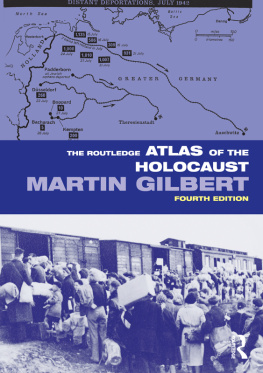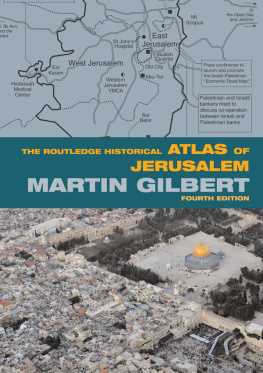Martin Gilbert - The First World War: A Complete History
Here you can read online Martin Gilbert - The First World War: A Complete History full text of the book (entire story) in english for free. Download pdf and epub, get meaning, cover and reviews about this ebook. year: 2014, genre: History. Description of the work, (preface) as well as reviews are available. Best literature library LitArk.com created for fans of good reading and offers a wide selection of genres:
Romance novel
Science fiction
Adventure
Detective
Science
History
Home and family
Prose
Art
Politics
Computer
Non-fiction
Religion
Business
Children
Humor
Choose a favorite category and find really read worthwhile books. Enjoy immersion in the world of imagination, feel the emotions of the characters or learn something new for yourself, make an fascinating discovery.
- Book:The First World War: A Complete History
- Author:
- Genre:
- Year:2014
- Rating:4 / 5
- Favourites:Add to favourites
- Your mark:
- 80
- 1
- 2
- 3
- 4
- 5
The First World War: A Complete History: summary, description and annotation
We offer to read an annotation, description, summary or preface (depends on what the author of the book "The First World War: A Complete History" wrote himself). If you haven't found the necessary information about the book — write in the comments, we will try to find it.
The First World War: A Complete History — read online for free the complete book (whole text) full work
Below is the text of the book, divided by pages. System saving the place of the last page read, allows you to conveniently read the book "The First World War: A Complete History" online for free, without having to search again every time where you left off. Put a bookmark, and you can go to the page where you finished reading at any time.
Font size:
Interval:
Bookmark:
The First World War
A Complete History
Martin Gilbert
Copyright
The First World War: A Complete History
Copyright 1994, 2014 by Martin Gilbert
Cover art, special contents, and Electronic Edition 2014 by RosettaBooks LLC
All rights reserved. No part of this book may be used or reproduced in any form or by any electronic or mechanical means, including information storage and retrieval systems, without permission in writing from the publisher, except by a reviewer who may quote brief passages in a review.
Cover jacket design by David Ter-Avanesyan/Ter33Design
ISBN e-Pub edition: 9780795337239
Contents
Maps
REGIONS
CAMPAIGNS
AFTERMATH
Introduction
More than nine million soldiers, sailors and airmen were killed in the First World War. A further five million civilians are estimated to have perished under occupation, bombardment, hunger and disease. The mass murder of Armenians in 1915, and the influenza epidemic that began while the war was still being fought, were two of its destructive by-products. The flight of Serbs from Serbia at the end of 1915 was another cruel episode in which civilians perished in large numbers; so too was the Allied naval blockade of Germany, as a result of which more than three-quarters of a million German civilians died.
Two very different wars were fought between 1914 and 1918. The first was a war of soldiers, sailors and airmen, of merchant seamen and civilian populations under occupation, where individual suffering and distress were on a massive scale, particularly in the front-line trenches. The second was a war of War Cabinets and sovereigns, of propagandists and idealists, replete with political and territorial ambitions and ideals, determining the future of Empires, nations and peoples as sharply as the battlefield. There were times, particularly in 1917 and 1918, when the war of armies and the war of ideologies combined, leading to revolution and capitulation, and to the emergence of new national and political forces. The war changed the map and destiny of Europe as much as it seared its skin and scarred its soul.
As a schoolboy in the immediate aftermath of the Second World War, I was very conscious of the First World War, although it had ended twenty-seven years earlier. The school porter, Janitor Johnson, a former Royal Marine, was a veteran of the naval attack on Zeebrugge in 1918, and was said to have been recommended for an award for valour there. The headmaster, Geoffrey Bell, had won the Military Cross on the Western Front, but had pacifist instincts which he made known to the boys. One of my first history masters, A.P. White, had also fought in the trenches: he would march up and down the classroom with a broom over his shoulder, singing military songs. When I began work on this book his letters from the trenches were published, revealing great suffering and sensitivity. My fathers elder brother, my uncle Irving, had fought on the Somme: his experiences had scarred him, and we boys in the family were warned not to question him. He died as I was writing this book, at the age of ninety-three.
During my National Service in 1954 and 1955, the First World War was an ever-present memory. The infantry regiment with which I trained, the Wiltshires, had lost a battalion at Reutel, in the Ypres Salient, when 1,000 men were all but wiped out, and the few survivors were taken prisoner in October 1914. Another battalion had been all but wiped out, in a few minutes, on the slopes of Chunuk Bair, on the Gallipoli Peninsula, in 1915. A third battalion had been trapped by German naval gunfire on the Salonica Front in 1917. During my academic researches, whatever subject I was working on, whether the British Empire in India at the turn of the century or the establishment of Soviet rule in the Ukraine in the 1920s, the First World War continued to impinge on my researches. My supervisor on Indian history, C.C. Davies, had been wounded on the Western Front and was still troubled by his wound. My work on historical geography in the early 1960s took me to Arnold Toynbees flat in London. On his mantelpiece were photographs of half a dozen young men in uniform. I asked him who they were. He told me they were his closest friends at university before 1914: all had been killed in the trenches.
Over several decades my travels took me to many of the war zones and places associated with the war. In 1953, encouraged by one of my history masters, Alan Palmer, I travelled through several of the regions whose war memorials introduced me to the differing perspectives on the war: and also to Vienna, where the Hofburg and the Ballhausplatz recalled both the ageing Emperor and his Foreign Ministers; to Ljubljana, which as Laibach had been one of the cities whose Slav population sought independence from Austria and whose soldiers chafed at their role in maintaining the Hapsburg Empire; and to Venice, threatened in 1917 by the imminent arrival of the Austrian army.
In June 1957, in Sarajevo, I stood on the spot where Gavrilo Princip had fired the fatal shot in June 1914. Even under the Yugoslav Communist regime Princip was hailed as one of the forerunners of national independence. A concrete paving stone was set with two footsteps, commemorating the act which plunged Europe into its four-year conflict. In Belgrade that year I looked across the river to where the Austrians had bombarded the Serb capital on the first day of war. A decade later I went with my father to the Western Front: we stayed at Arras, to the east of which the military cemeteries are the last relics of the battles of 1917 and 1918, and at Ypres, where we listened each evening at eight oclock to the Last Post, sounded at the Menin Gate by two members of the Ypres Fire Brigade.
While the buglers played under the vast archway of the Menin Gate, all traffic was stopped. The cost of their work was paid for in part by a legacy from Rudyard Kipling, whose only son was killed at Loos. On the walls and columns of the monumental gate are carved the names of 54,896 British soldiers killed in the salient between October 1914 and mid-August 1917 who have no known grave. On the stonework are the shrapnel marks of the fighting there in the Second World War. The last of the stonemasons were still at work engraving the names of 191418 when the German armies arrived, as conquerors, in May 1940. The stonemasons were repatriated to Britain.
From the Menin Gate, my father and I walked through the salient, trench maps in hand, reading at each battle site the accounts given in General Edmonds multi-volume official history, the letters and recollections of soldiers, and the poetry. We stood in silence, as all visitors do, at the Tyne Cot Memorial at Passchendaele, on which are carved the names of a further 34,888 soldiers killed in the salient between mid-August 1917 and the end of the war in November 1918, of whom no trace was found sufficient to identify them for burial. In the cemetery in front of the memorial are more than 11,000 individual named graves. Not even the well-mown grass, the carefully tended flower beds and the fifty-year-old trees could lessen the shocking impact of so many names and graves. Not far away, at Menin, which was held by the Germans for all but one month of the war, we visited the military cemetery where 48,049 German soldiers are buried.
Fifteen years after my visit to the site of the assassination of the Archduke Franz Ferdinand in Sarajevo, where the First World War could be said to have started, I made the journey to the woodland clearing near Rethondes in France, to see a replica of the railway carriage in which the Germans signed the armistice in November 1918. It was in the same carriage that Hitler insisted on receiving the French surrender in June 1940. Many links between the two wars are a reminder that only twenty-one years lay between them. Many of those who fought in the trenches in the First World War were leaders in the Second World War, like Hitler, Churchill and de Gaulle, or, like Rommel, Zhukov, Montgomery and Gamelin, became commanders in the second. Others, like Ho Chi Minh, who volunteered to serve with the French as a Vietnamese orderly in the First World War, and Harold Macmillan, who fought and was wounded on the Western Front, rose to prominence after the Second World War.
Next pageFont size:
Interval:
Bookmark:
Similar books «The First World War: A Complete History»
Look at similar books to The First World War: A Complete History. We have selected literature similar in name and meaning in the hope of providing readers with more options to find new, interesting, not yet read works.
Discussion, reviews of the book The First World War: A Complete History and just readers' own opinions. Leave your comments, write what you think about the work, its meaning or the main characters. Specify what exactly you liked and what you didn't like, and why you think so.














